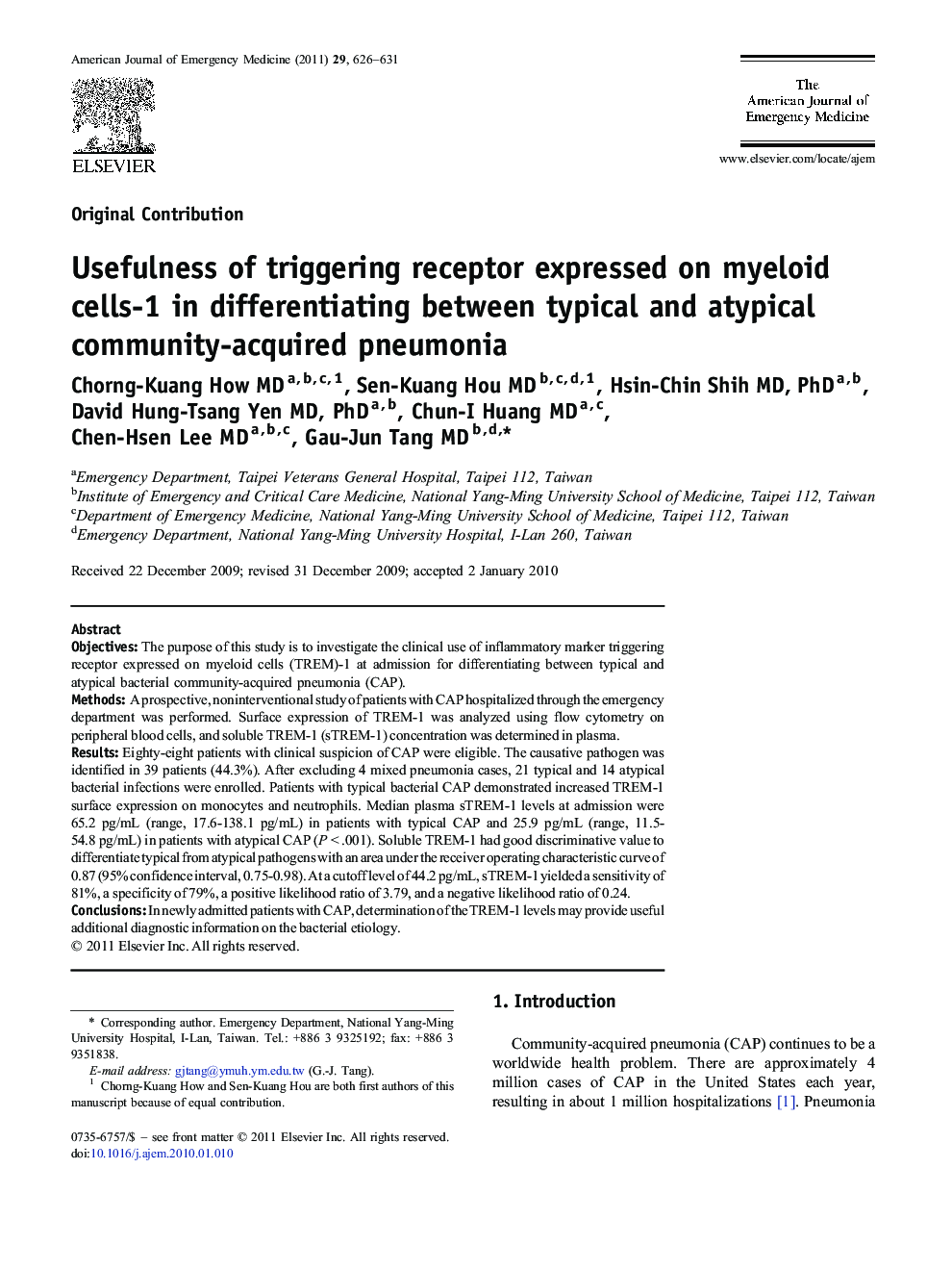| کد مقاله | کد نشریه | سال انتشار | مقاله انگلیسی | نسخه تمام متن |
|---|---|---|---|---|
| 3225392 | 1588147 | 2011 | 6 صفحه PDF | دانلود رایگان |

ObjectivesThe purpose of this study is to investigate the clinical use of inflammatory marker triggering receptor expressed on myeloid cells (TREM)-1 at admission for differentiating between typical and atypical bacterial community-acquired pneumonia (CAP).MethodsA prospective, noninterventional study of patients with CAP hospitalized through the emergency department was performed. Surface expression of TREM-1 was analyzed using flow cytometry on peripheral blood cells, and soluble TREM-1 (sTREM-1) concentration was determined in plasma.ResultsEighty-eight patients with clinical suspicion of CAP were eligible. The causative pathogen was identified in 39 patients (44.3%). After excluding 4 mixed pneumonia cases, 21 typical and 14 atypical bacterial infections were enrolled. Patients with typical bacterial CAP demonstrated increased TREM-1 surface expression on monocytes and neutrophils. Median plasma sTREM-1 levels at admission were 65.2 pg/mL (range, 17.6-138.1 pg/mL) in patients with typical CAP and 25.9 pg/mL (range, 11.5-54.8 pg/mL) in patients with atypical CAP (P < .001). Soluble TREM-1 had good discriminative value to differentiate typical from atypical pathogens with an area under the receiver operating characteristic curve of 0.87 (95% confidence interval, 0.75-0.98). At a cutoff level of 44.2 pg/mL, sTREM-1 yielded a sensitivity of 81%, a specificity of 79%, a positive likelihood ratio of 3.79, and a negative likelihood ratio of 0.24.ConclusionsIn newly admitted patients with CAP, determination of the TREM-1 levels may provide useful additional diagnostic information on the bacterial etiology.
Journal: The American Journal of Emergency Medicine - Volume 29, Issue 6, July 2011, Pages 626–631